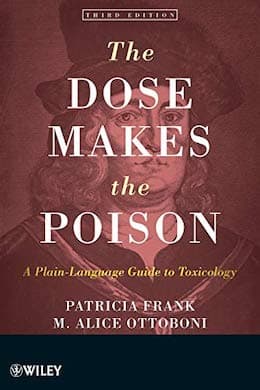
-----
HCl vs. Muriatic Acid
I am restoring a '57 Chevy, and I have several rusty parts that I would like to "pickle" in HCl but don't have access to. I was wondering if muriatic acid ⇦ on eBay or Amazon [affil link] would have the same effect? I work in a Steel Mill, and have seen the effects of pickling, and how wonderful it cleans up rust metal, however we use HCl. I have a Bell Housing, and several rusty engine parts, as well as clips and spring hinges that I would like to clean up, but is too time prohibitive using a wire wheel.
Jeff Hendon- Granite City, Illinois
Jeff,
There 'ain't' no difference between HCl and muriatic ... maybe some brands of muriatic are not as strong as pure (37 degree baumé?) HCl ... otherwise zero difference. OK?
Please see the archives # 12044 for verification (you will not enjoy this if you are a cat lover).

Freeman Newton [deceased]
(It is our sad duty to advise that Freeman passed away
April 21, 2012. R.I.P. old friend).
Thank you for your prompt and informative response. I spoke with my supervisor the "metallurgist" and he wasn't quite sure. Fresh out of college, although we went through some chemistry equations together and it seemed to panout that my objective to attack the FeO2 would work with any type of acid, just in different time frames. I see you guys speak of CrIII from time to time. We use it to treat Galvanized steel as a last pass. It's in a spray form, inhibits white rust from oxidizing galvanize/galvalume, the premise being that the chromium will oxidize before the other metals. I do hope you all know how dangerous that stuff is! i.e. See movie Erin Brockovich [affil link to Amazonaffil links], Absorbs through the skin, airborne, ingestion. Cause chromosomal damage, crazy kookie stuff.
Jeff Hendon- Granite City, Illinois
You mentioned Erin Brockovich, so I was compelled to respond.
There is a distinct difference between trivalent chrome (Cr+3) and hexavalent chrome (Cr+6). You mentioned "CrIII" which would be trivalent. Trivalent chrome is pretty much benign, and actually is a vitamin. Hexavalent chrome is the nasty carcinogen you are thinking about. If you watch the movie again, you will notice they cover the difference. PG&E originally told the people near the contamination that the chromium was trivalent and good for them when it really was the nasty hexavalent type.
Platers use hex chrome a lot, but they all (maybe with a few rare exceptions) use wastewater treatment systems that prevent groundwater releases similar to what happened in the movie. The industry is now moving towards replacing most of its hexavalent chrome applications with trivalent.
As for the muriatic acid / HCl, that is correct. They sell HCl for home use, but they water it down and call it muriatic acid. Muriatic acid is a dilute solution of hydrochloric acid, the "home version" as opposed to the more potent industrial or laboratory strength.

Tim Neveau
Rochester Hills, Michigan
Hi Tim,
Trivalent chromium is not nearly as toxic as hexavalent, and chromium is a vital nutrient at the microgram level, but it is still a dangerous thing to release to the environment or to handle. A pound of chromium sulphate would satisfy the Daily Adult requirement of the entire United States, something like that. And one plant treating wastewater from a chromate conversion line could make a ton of it in a year.
I would not want anyone to think that it could be considered as safe as a vitamin; since I conjure up images of Fred Flintstone tablets with their yummy fruit flavors when I think vitamins.
This is from an MSDS for chromium sulphate, Cr2(SO4)3-xH2O
Inhalation:
Causes irritation to the respiratory tract. Symptoms may include coughing, shortness of breath. May cause headache, dyspnea, and fever. May also cause tracheobronchial irritation and pulmonary edema.
Ingestion:
Causes irritation to the gastrointestinal tract. Large oral doses may cause dizziness intense thirst, abdominal pain, vomiting, and shock. Death may occur from renal failure. Chromium compounds in the 3+ state have a much lower toxicity than those in the 6+ state.
Skin Contact:
Causes irritation to skin. Symptoms include redness, itching, and pain. Prolonged contact may cause skin ulcerations. May cause allergic skin reactions.
Eye Contact:
Causes irritation, redness, and pain. Prolonged contact may cause eye damage.
Chronic Exposure:
Prolonged or repeated skin exposure may cause dermatitis. Prolonged or repeated inhalation of dust may cause perforation of the nasal septum.
Aggravation of Pre-existing Conditions:
Persons with pre-existing skin conditions or impaired respiratory function may be more susceptible to the effects of this substance.
Airborne Exposure Limits:
-OSHA Permissible Exposure Limit (PEL):
for Cr(III) compounds = 0.5 mg/m3 (TWA)
The PEL for chromic acid (hexavalent CrO3) is:
EXPOSURE LIMITS PERCENTAGE
PEL:0.1 mg/m3 Ceiling as CrO3

Tom Pullizzi
Falls Township, Pennsylvania
Yes, you are right, Tom. Even though traces of trivalent chrome are found in vitamins, one does not want to run out and drink a glass of it for good health. Even though trivalent chrome is not as nasty as hexavalent, it still poses some health risks.

Tim Neveau
Rochester Hills, Michigan
Q, A, or Comment on THIS thread -or- Start a NEW Thread
